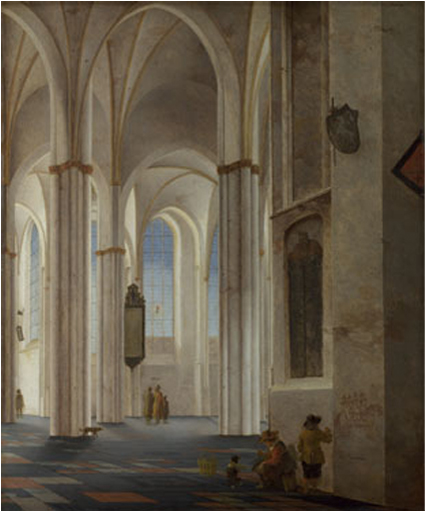Pieter Saenredam's Interior of the Buurkerk, painted in 1644, detains few visitors to the National Gallery. It is such a quiet and unassuming picture, so still and distant and alien, that it is easily passed by. But it rewards close inspection. This painting of a Protestant church in Utrecht exemplifies Saenredam's fanatical modesty, his apparent lack of interest in anything superfluous to architectural description. It contains a few, isolated groups of figures and the odd dog or two, but they are dwarfed by the spacious church in which they are located and which seems to be the painter's true theme.
Attention is concentrated on the stately repetition of column, arch and spandrel; on cool expanses of stone wall and floor; on a space whose meagre contents, partially inventoried by the sunlight that pours in through high Gothic windows, seems to speak metaphorically as well as materially of purity. The ecclesiasti-cal interior, translated into a painterly language that is eloquent of order - Saenredam's lucid focus on the play of horizontals and verticals may dimly prefigure the art of Mondrian - is subtly invested with spiritual significance.
Saenredam has been called ''the first portraitist of architecture'', which might be said to make him oddly topical. The relationship between art and architecture is, as curators like to say, a live issue right now. ''Like nothing else in Tennessee'', an exhibition at the Serpentine Gallery which takes its title from a line by Wallace Stevens, is devoted to ''artists whose work incorporates architectural references, both as a utopian concept and an urban reality''. And on Canary Wharf, in the shadow of the largest new office building in Western Europe, you will find ''Discretion'', an exhibition of work by younger artists, divided between the Rotunda Gallery and vacant shop premises beneath the glass and...


